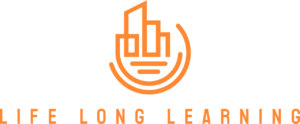Growth Hacking for A/B Testing: Strategies for Optimizing Your Conversion Rates
In the ever-evolving world of digital marketing, staying ahead of the competition requires a dynamic approach. Growth hacking and A/B testing are two powerful tools that, when combined, can significantly boost your website’s performance and conversion rates. In this blog post, we will explore the world of growth hacking for A/B testing, providing you with actionable strategies to drive growth, engage your audience, and ultimately optimize your conversion rates.
Section 1: Understanding A/B Testing
A/B testing, also known as split testing, is a systematic method of comparing two versions of a webpage or app to determine which one performs better in terms of user engagement and conversion rates. This process involves splitting your audience into two groups, where one group sees the original version (A), and the other sees a modified version (B). By analyzing the performance of both versions, you can make data-driven decisions to improve your digital presence.
Section 2: Setting Clear Goals
Before you embark on your A/B testing journey, it’s crucial to establish clear and specific goals. Ask yourself what you want to achieve through your tests. Are you looking to increase click-through rates, reduce bounce rates, or improve conversion rates? Setting precise goals will guide your testing strategy and help you measure success accurately.
Section 3: Identifying Key Metrics
To evaluate the effectiveness of your A/B tests, you must monitor key metrics and KPIs (Key Performance Indicators). Metrics like click-through rate (CTR), bounce rate, conversion rate, and revenue per visitor provide valuable insights into your website’s performance. Tools like Google Analytics can help you track and analyze these metrics, enabling you to make informed decisions based on data.
Section 4: Creating Hypotheses
Strong A/B testing begins with well-formulated hypotheses. These hypotheses should be based on user behavior, research, and data analysis. For example, if you have observed that visitors often abandon their shopping carts on your e-commerce site, your hypothesis might be that simplifying the checkout process will increase conversions. A strong hypothesis is specific, testable, and backed by evidence.
Section 5: A/B Test Implementation
Selecting the right A/B testing tool is essential. Tools like Optimizely, VWO, or Google Optimize can assist you in setting up and running tests effectively. When setting up your tests, ensure that you randomize the audience and determine the appropriate sample size. Properly executed split testing helps reduce biases and ensures statistically significant results.
Section 6: Running A/B Tests
Running A/B tests involves dividing your audience into two groups: one exposed to the original version and the other to the modified version. It’s essential to carefully time your tests and ensure that they run long enough to gather sufficient data. Statistical significance is crucial in determining whether the observed differences are statistically meaningful.
Section 7: Analyzing Results
Interpreting A/B test results requires a keen eye for detail. Identify the winning variation and understand the implications of the results. Sometimes, tests may yield inconclusive results, indicating that further investigation is needed. A/B testing is an iterative process, so don’t be discouraged by inconclusive outcomes. Learn from each test and iterate accordingly.
Section 8: Scaling Success
When you identify winning variations through A/B testing, scale your success by implementing the changes across your website or digital product. This scaling process can have a significant impact on your growth and conversion rates. Remember that A/B testing is an ongoing practice; continue to test and optimize to stay ahead of the competition.
Section 9: Case Studies and Examples
Let’s explore real-world examples of companies that have successfully employed A/B testing for growth hacking. By examining these cases, you can gain insights into the strategies and results achieved by businesses that prioritize data-driven decision-making.
Takeaway
Growth hacking for A/B testing is a dynamic approach to optimizing your website’s conversion rates and achieving sustainable growth. By understanding A/B testing, setting clear goals, monitoring key metrics, creating hypotheses, implementing tests effectively, and analyzing results, you can harness the power of data to drive growth and enhance your digital presence. Embrace the iterative nature of A/B testing, learn from your tests, and continue to refine your strategies for long-term success. Start today, and watch your conversion rates soar.

